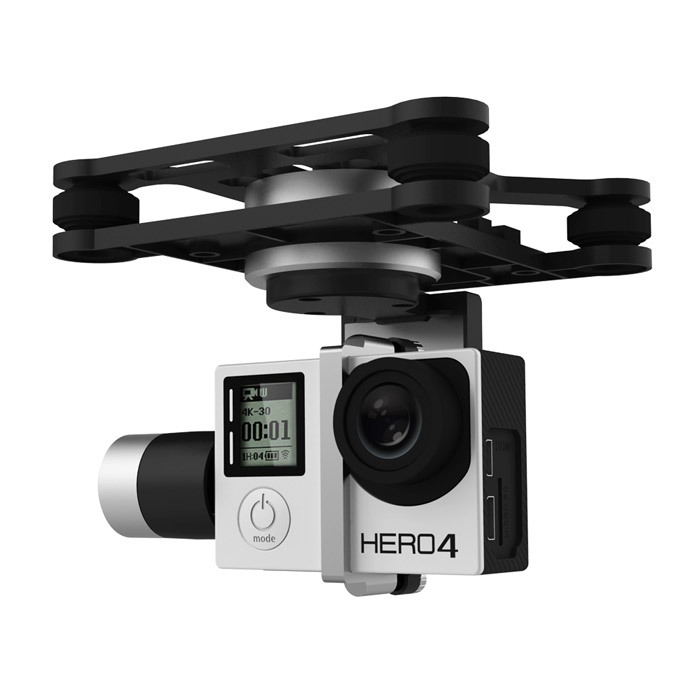What Is A Gimbal And How Does It Work?
What Is A Gimbal?
Introduction
The word gimbal can be utilized to define any adjustable compass holder or camera made to keep the device level. A gimbal can be a mechanism that usually includes bands which pivot at correct angles like a chronometer or compass. It maintains a device horizontal in moving aircraft or vessel. Despite the object’s motion, the gimbal keeps points upright. Modern drone’s camera is usually a magical device called a 3-axis Camera gimbal. It includes many of the same technology which is in the drone itself.
An accurate explanation of the quadcopter gimbal will be a 3-axis camera and anti-vibration gadget. It uses brushless motors to regulate the positioning of the camera. 3-axis defines that the video camera is used to all directions left/ideal, up/down, and ahead/backward. People can buy drone gimbals in two methods as a distinct. It has camera stands or as a total unit with a camera. The larger mechanical elements of a gimbal are very essential. The camera frame and three motors are work together to keep the assemblage level plus vibration free.

How To Select The Right Camera Gimbal
When choosing gimbals, there are many factors to take into consideration. One kind of motor is essential. The camera gimbal’s capability to balance may be vital to obtaining the best outcomes. The camera must be well balanced on all axes. So it places fewer loads on the electric motor. The materials need to be solid. People have to be careful of ones using thin fiberglass, carbon, or aluminum sheets for the hands. The most conservative point to look for is certainly its expandability. It is necessary to consider whether it's easily modified to swap out a two axis for a three axis and may it swap out the motor if you need to on the drone you get.
When searching for a drone, you would inevitably reach a step where you must decide on which kind of brushless camera gimbal to select from. Drones with brushless camera gimbal systems include two axes or three axis brushless gimbals typically. But which kind of gimbal you pick depends on everything you plan to utilize it for.

Many brushless gimbal systems have a two axis or 3 axes. Each offers their disadvantages and advantages, so we shall check out both. Initial, a two axis gimbal is fantastic if with limited funds. Less expensive when compared to a three axis, it could operate equally well as a three axis and does equally as good of a job. The downfall to a two axis is it is only going to stabilize on a roll and pitch axis. The horizontal movement could be jittery, and it is more apparent if shooting video.
A 3-axis gimbal, nevertheless, has better video balance because it is running on the yaw, pitch, and roll to stabilize. This feature diminishes the jello -y effect. The third motor helps to engage undesired movement; plus utilizing a three axis for high picture taking produces a much better quality video. When there are a couple of hands working the camera, it permits two radio transmitters-one to pilot and someone to operate the real video camera. The drawback to the three axes is normally that it's heavier compared to the two axes. So that it will draw more battery life; in fact, it is more costly than its counterpart.

Helipal has a great video that demonstrates the distinctions between the H3-3D and 2-axis 3-axis gimbals. Both camera gimbals had been and installed mounted on two different Phantom quadcopters that have attached to a more substantial hexacopter. The hexacopter was after that flown in various flying conditions showing the differences in video quality from the two gimbals.
How Does It Work?
Today's drone gimbal uses most of the same technologies as your smartphone, video game controllers as well as your drone airline flight controller system. These new electro-mechanical products are known to the acronym MEMS. You will notice them described by even more certain functions and names such as IMU, Accelerometers, and Gyroscopes.

To help make the gimbal work requires a complete lot of computing power. It encases in a circuit board called the controller often. This board also includes the MEMS in addition to the firmware that your manufacturers have created.
These use brushless DC motors of servo motors instead. These have lower reaction occasions than servo motors so the video is a full lot, a complete lot smoother than what you will get if you were to employ a servo gimbal.

Otherwise, a two axis camera gimbal will not cloister your camera from annoying motions on the shaft. It keeps it from exciting on the pitch and roll axes. Certainly, a three-axis camera gimbal is much more advanced than a two axis one since the resultant video is nearly no cost from all feelings.
That is just one small part of a MEMS device. The fingertips that you observe are pushed in a single direction or the additional by g-forces. These send electric signals detailing the precise forces and path of them back again to a computer within the gimbal controller.
Conclusion
It depends on upon what you are considering. If you would like the flattest, qualified grade midair video, then you will need the best three axes brushless camera gimbal. However, if you're seeking to shoot video that's better rather than necessarily professional quality, investing in a three-axis camera gimbal might be overkill. You’d also need to notice that if you're likely to be capturing mainly photographs and not videos, both axes gimbal will be all you want. You certainly do not essential the three axis camera gimbal for midair photography.If you are into FPV not actually into aerial videography, at two axes camera gimbal should be sufficient to your requirements. If cash is a no matter, you’d need to get a three axis gimbal to get the best possible FPV knowledge. But if you're on a spending budget, a two axis gimbal ought to be good enough.





